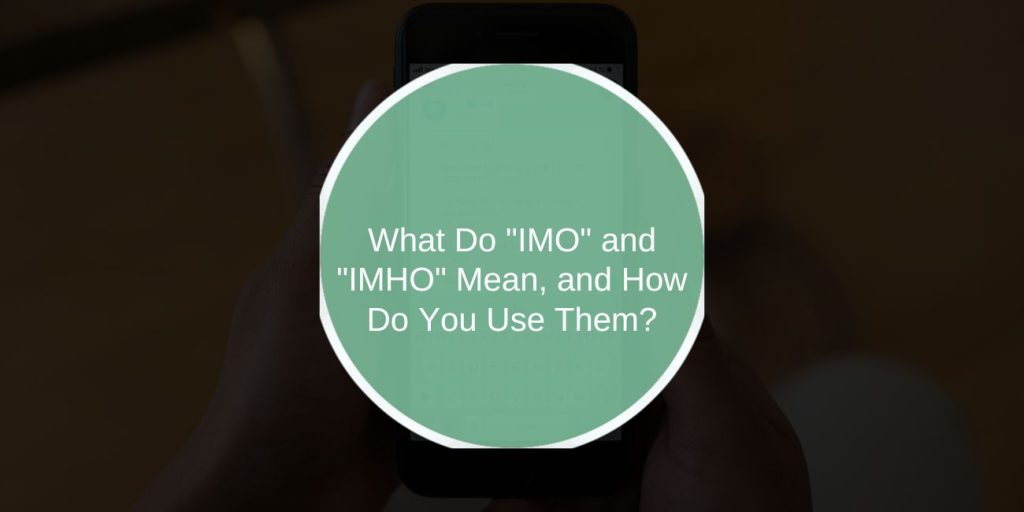Online conversations move fast. Shortcuts help people get their message across quickly, especially in places like Reddit, Twitter, or chat apps. You may see someone say “IMO that movie was bad” or “IMHO this should have been done differently.” But what do these terms really mean? And how should you use them?
This guide breaks down what these internet abbreviations mean and how they shape tone, so you can use them without sounding rude or sarcastic by mistake.
What Does “IMO” Mean?
IMO stands for “In My Opinion.” It’s used when someone wants to share what they think without making it sound like a fact. It’s a way to express a personal view while leaving room for others to disagree.
For example:
“IMO, the older version of the app worked better.”
This kind of sentence softens what could sound like a complaint. It shows the person is talking about their own point of view, not declaring a rule.
You’ll often see IMO in forums, comment sections, or text chats when people share feedback, suggestions, or preferences.
What Does “IMHO” Mean?
IMHO means “In My Humble Opinion.” It’s like IMO but adds a tone of humility—or at least it tries to. People use it when they want to sound more polite or respectful, especially in discussions where strong opinions are being shared.
For example:
“IMHO, they should have included more examples in that article.”
It makes the message sound a bit softer. You’re not just giving your opinion—you’re saying you’re aware others may know more or feel differently.
Is IMHO Always Humble?
Not always. While “humble” is in the phrase, the tone can sometimes feel the opposite—especially online. People might use IMHO in a sarcastic way, like when they want to disagree but act like they’re being polite.
For example:
“IMHO, this feature is pointless and a waste of resources.”
Here, it may sound more passive-aggressive than humble. That’s why reading tone online is tricky. What sounds polite to one person might feel dismissive to someone else.
When to Use IMO or IMHO?
Both work in casual conversations. But they fit slightly different moods. Here’s a simple way to choose:
-
Use IMO when you’re giving a straight opinion
-
Use IMHO when you want to sound gentler or more respectful
-
IMO is fine in debates or direct chats
-
IMHO is good for soft advice or disagreement
Don’t overthink it—just pick the one that fits your tone.
Examples in Real Conversations
To help it click, here are some sample uses of both:
IMO:
-
“IMO, the update made the UI worse.”
-
“IMO, they should’ve gone with a lighter font.”
IMHO:
-
“IMHO, the support team handled it well.”
-
“IMHO, it’s a bit early to say it’s a success.”
These come up often in threads, texts, or replies where users weigh in on designs, features, or content.
Should You Use Them at Work?
In professional settings, it’s better to keep your messages clear. If you’re writing an email or sending a note on Slack, spelling things out avoids confusion. Some people don’t know what IMO or IMHO means, especially outside of tech or online circles.
Instead of acronyms, you might say:
-
“In my view, we should delay the release.”
-
“I think it’s worth considering another option.”
Still, if your team or group already uses these casually, it’s okay to follow the tone.
Final Thoughts
IMO and IMHO are easy to use once you know what they mean. They help add tone to text, especially when you want to soften a strong opinion. Just make sure your message is clear and respectful.
Not everyone reads internet slang the same way, so think about who you’re talking to. If you’re unsure, full sentences are safer. But in most casual chats, these two shortcuts can save space and still sound polite.
Feel free to share this guide with someone new to texting or online forums. And if you’ve seen funny or unusual uses of these acronyms, drop them in the comments—IMHO, it’s always fun to learn how language evolves.
